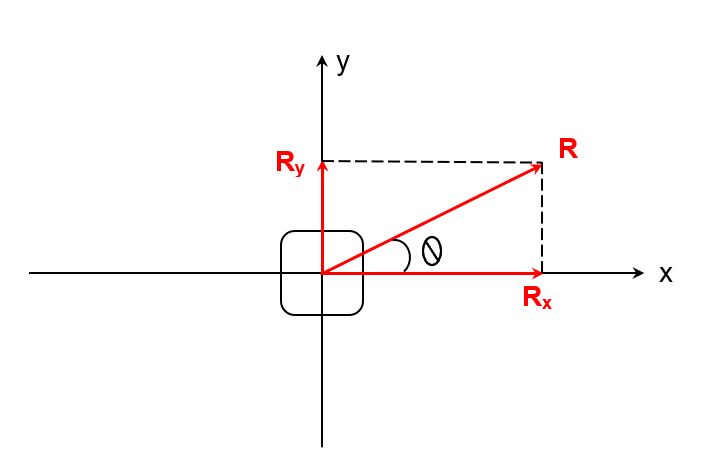To calculate result you have to disable your ad blocker first.
Resultant Force Calculator
Enter the magnitudes and directions of x and y forces in the magnitude of the resultant forces calculator and hit the calculate button.
Table of Contents:
Resultant force Calculator
The resultant force calculator finds the magnitude and the direction of the resultant force. You can find the resultant for up to 2 force vectors.
If you have three vectors e.g a, b, and c, first enter the a and b vectors and then add the resultant vector of a and b and the c vector.
What is the resultant force?
The resultant force is the net force acting on an object that is under multiple forces. Since force is a vector quantity, the resultant force has both magnitude and direction.
The resultant force can be displayed in the vector form as follows:

Resultant force formula:
There are different formulas for both magnitude and direction.
For magnitude:
![]()
For magnitude, it is important to know the angle between the vectors.
And for direction/angle:
![]()
Typically for finding the magnitude, the angle is calculated first.
How to find the resultant force?
Example:
A car is being pushed by 10 newtons in the forward direction (0o) and by 7 newtons from a 90 degrees angle.
Solution:
Step 1: Identify the values.
Magnitude of F1 = 10N
Magnitude of F2 = 7N
Angle of F1 = 0o
Angle of F2 = 90o
Step 2: Find the x and y components of the resultant force.
X-component of F1= 10cos(0) = 10
Y-component of F1 = 10sin(0) = 0
X-component of F2 = 7cos(90) = 0
Y-component of F2 = 7sin(90) = 7
Step 3: Find summation fx and fy.
Σfx = 10 +0 = 10
Σfy = 0 + 7 = 7
Step 4: Find the angle.
θ = tan-1 (7/10)
θ= tan-1 (0.7)
θR = 34.99o ≈ 35o
Step 5: Put the values in the magnitude formula.
|R| = ½ [(10)2 + (7)2 - cos (35)]
|R| = ½ [100 + 49 - 0.819… ]
|R| = ½ [ 149 - 0.819… ]
|R| = ½ [ 148.093… ]
|R| = 12.2 N